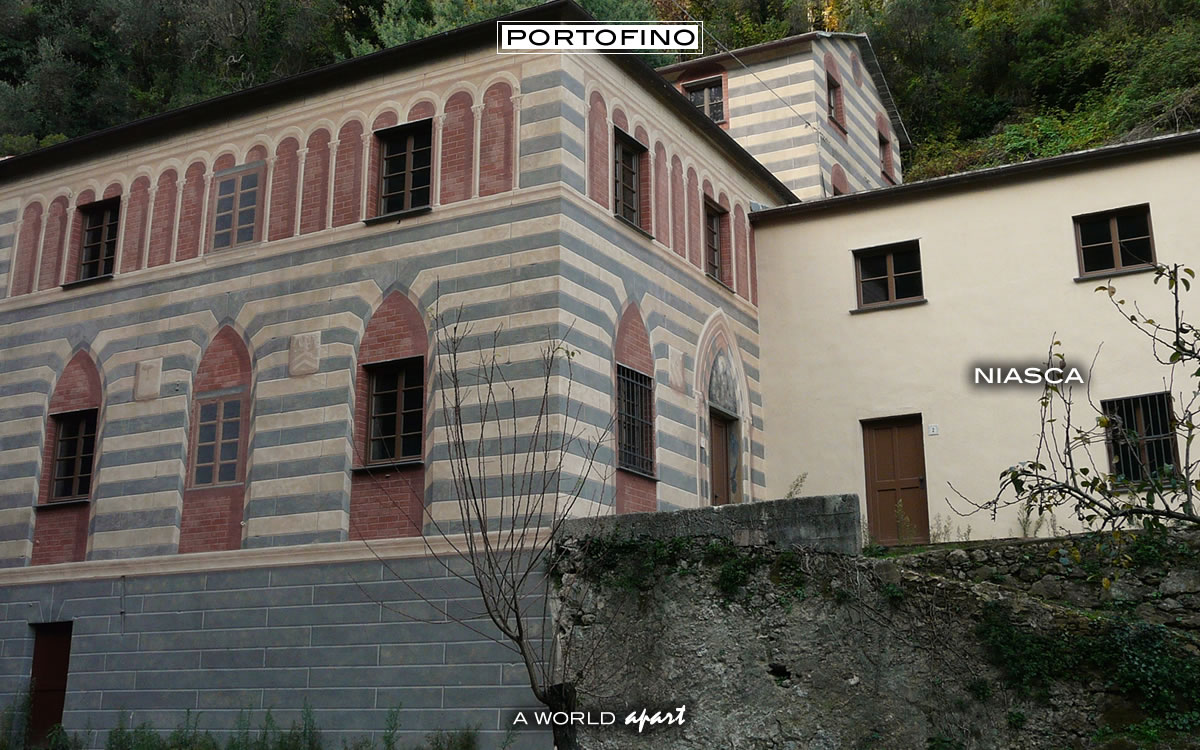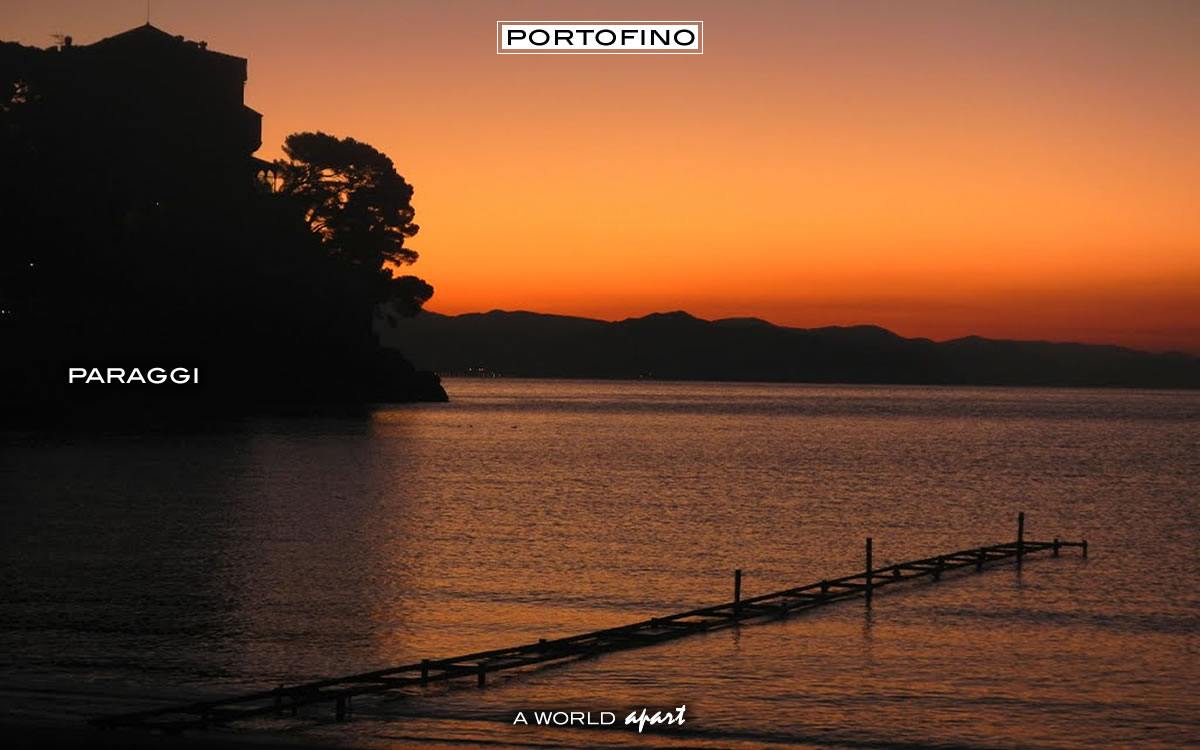
A part of the population of Portofino worked as millers along the torrents of the “springwaters”, that gets it’s name “flowing waters” because, nearly at the top of the Mount at 400 metres above sea level, exist perennial water sources which gush out between two types of stone: on one side the rocks of Portofino called “pudinga“, on the other side the stone called “dell’antola” originating from Mount Antola. A good quantity of water flows out of these springs, at least 1300 cubic metres daily, even when the drought period starts, it lessens, but it is always enough for the function of the water-mills. Like that, a long time ago, buildings were built with adjoining houses so that the millers could work serenely: work was guaranteed for the families that, in time, became 35; other people were involved carrying the corn, especially the inhabitants of the port during the summertime and the drought period when, from the two Riviere, they reached Portofino by boat to grind their products.
A part from the wheat, they made pine bran (that is the bark) to dye, or preserve the fishermens nets which was more important: there were also the grinders to press the olives, the washhouses to extract oil from the husk, and get the nuts for the stoves and ovens. The mills belonged to the families of Portofino and a few mills existed also in the trench of “water pools”, in the Santa Margherita territory. Devoting myself to the story of water, I found out that some families were, and still today, owners of the same old mill ruins as well as apartments and grounds of Portofino. The family names that are still known today are Devoto, Carbone Vignale, Arata, Vassallo, Crovo Schiaffino, Gallotti, Guerello, Baratta, Prato and Costa. This list of mills has been carried out in the memory of men with the help of Emanuele Borzone, called “Picin” (Tiny), born in the Mill area and owner, together with his brothers, of the last olive grinder with a battery mince up on the Mount: there could be some mistakes, with reference to the different owners, that must be excused.

Leaving Paraggi, we find 1- Husk mill and washhouse of Devoto, today the owner is Engineer Gardella; 2-Mill-olive grinder and washhouse of Devoto, said to be “Gattine”, today the owner is the Commune of Santa Margherita and it has been transformed into “Teresina” restaurant; 3- Wheat mill of Arata, said to be “S. Quirico”, this had been transformed into a turbine and was the last to function up until 1920; 4 – A ruin, the owner became Gardella of Villa Grande; 5- Wheat mill in the Eremiti locality with adjoining house, the owner being Broccardo; 6- A ruin of Vassallo, today the owner is Consigliere, 7- A ruin of Vassallo, today the owner is Consigliere; 8- Mill, said to be “di Caterina”, today the owner is Broccardi; 9- Wheat mill with house, said to be “dell’uva”, of Carbone, today the owner is Broccardi; 10- Tiny mill, today a store house for wood, the owner is Sozzani; 11- Pine bran mill-grinder of Crove, owner Schiaffino; 12- Wheat mill with house, owner Giuffra; 13- Wheat mill with house, owner Giuffra; 14- Olive grinder with house, said to be “dei Randoni”, owner Gallotti; 15- Olive mill-grinder in the Puntiggio locality with house, owner Zozzani; 16- Ruin with obvious house; 17- Ruin; 18- Carbone’s mill, said to be “Sciuiela”, owner Borzone; 19- Wheat mill, then olive grinder, owner Borzone; 20- Olive grinder of Devoto, today the owner is the Commune of Santa Margherita; 21- Ruin; 22- Ruin; 23- Mill, said “de co” (that is high), of Caterina Brotto, said “la Gobba” (that is the Hunchback).
How is mentioned above, others existed along the torrent of “water pools”. This name was given because during the summer period the water subsided considerably from the springs of Mount Pollone. The mills had a regulation to respect for the use of water, the water had to be divided equally from one mill to another and, to respect this custom, existed a “Magistrate of the Waters” that supervised the use: this Magistrate lived in Paraggi where today the “Baia” hotel is situated. I think the last Magistrate was called Rossetti who, after the discovery of the electric light, together with a certain Tamburelli, built an aqueduct for drinking water in cast iron pipes, that were inported from England. Like that, what happened in the navy, also happened to the mills and their millers who had to find other work, because exactly in that period Portofino was considered an island without land access and, therefore, it was very difficult to find a “solution of survival.” (Thanks to Giovanni Carbone).
Portofino, a World apart.
